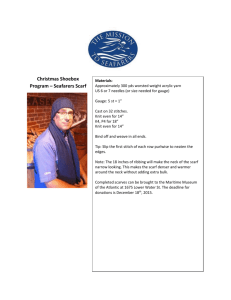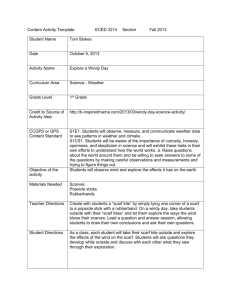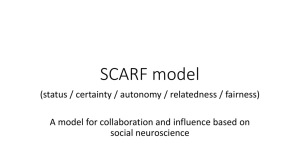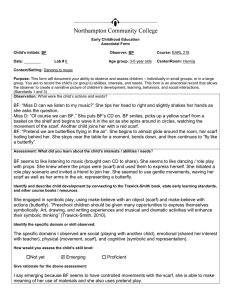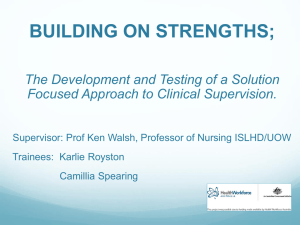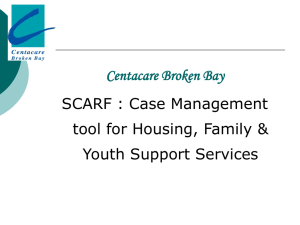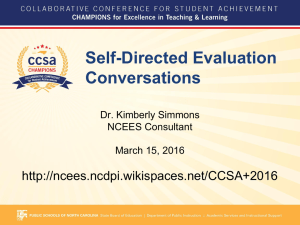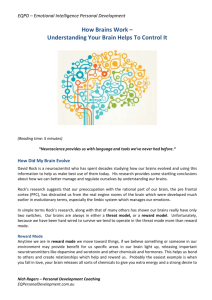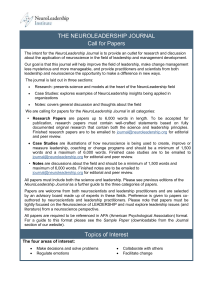Neuroleadership - The Neuroscience of Collaboration
advertisement
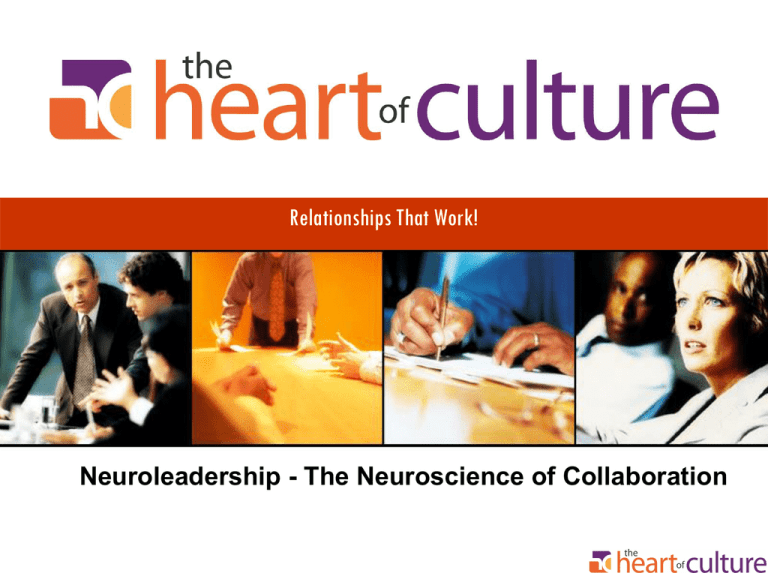
Relationships That Work! Neuroleadership - The Neuroscience of Collaboration Why this topic? What do I do? •Dopamine •Cortisol What is Neuroleadership The Neuroscience of: • Making decisions and solving problems • Staying cool under pressure • Collaborating with others • Facilitating change In a nutshell….. Bringing hard science to the art of human performance. (leadership development, coaching, change management and learning) David From David Rock, Neuroleadership Institute Understanding the Brain • A hand model of the brain from Dr. Dan Siegel • http://www.youtube.com/watch?v=DD-lfP1FBFk Neuroscience – The Four Key Elements 1. Neuroplasticity – the ability of the brain to change 2. Long-term potentiation – focus and attention to change 3. Minimize danger and maximize reward – the organizing principle of the brain 4. The deeply social brain - SCARF The organizing principle of the brain • Neuroscientist Evian Gordon, in one of the latest meta analyses of brain research in the world, proposes that the organizing principle of the brain is the minimize danger and maximize reward. (Gordon, 2008) • The basis for this belief is the extensive literature emerging about the reward/threat response (e.g. Elliot , 2008) • For example, the neural basis of engagement is closely linked to the threat/reward function. The Organizing Principle of the Brain Away Threat Fast Acting Stronger Longer Lasting More Likely Adrenaline Up Dopamine Down Toward Reward Slower Acting Milder Shorter Less Common Adrenaline a little up Dopamine Up The Organizing Principle of the Brain Away Threat Minimize danger Disengaged Uncertainty Problem focused Avoid Contract Dislike Tunnel Vision Toward Reward Maximize reward Engaged Interest Solution focused Approach Extend Like Global View Exercise • Think back over the past week, and connect with what is a typical day for you • Find a partner now, and discuss what situations put you in an away or a toward state The deeply social brain…. Social Pain = Physical Pain Eisenberger/Lieberman, Social Pain Physical Pain Overlap Theory, SPOT The SCARF Model Away Threat David Rock, 2008 Toward Reward Status Certainty Autonomy Relatedness Fairness SCARF domains in more detail… Status • Your perception of your position, relative to another person SCARF domains in more detail… Certainty • The brain is a prediction machine. • Uncertainty arouses the limbic system SCARF domains in more detail… Autonomy • The brain likes to be able to predict and have a say in the future. • A feeling of having a choice dramatically impacts stress levels. SCARF domains in more detail… Relatedness • Friend or Foe • Trust of distrust • Connect or don’t connect Foe is the default SCARF domains in more detail… Fairness • Brain regions associated with primary rewards - food, pleasant touch or pleasant memories, money, a picture of a loved one – those same regions were active when people received fair offers compared to unfair offers of equal level SCARF Exercise • Thinking about a current work situations or change process you’re involved in, how might the SCARF Model affect how you’re managing that process/situation? • What might you do differently now? Implications of SCARF • • • • • • • Engagement Leadership Practices Organizational Change Motivations Incentives Managing Performance Teams & Collaboration The Elephant in the Room Benefits of a Neuroleadership approach • Bringing hard science to the art of human performance – Academic approach – Research based evidence How to Reach Me Jackie Lauer www.heartofculture.com jackie@heartofculture.com 519-502-7081 @jackielauer
